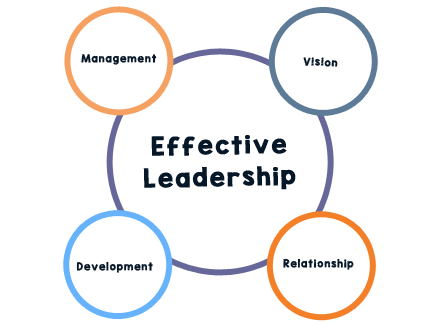What Is Effective Leadership?

Let’s start by defining effective leadership. Leadership shares a common trait with the word “strategy”; those in the business world use both excessively, yet they rarely define them. (You can find my definition of strategy HERE. I believe it’s necessary to distinguish between leadership and
management, even though those in leadership positions must do both. Management is taming complexity, and leadership is driving change.
OK, now we can talk about what effective leadership looks like
For the first several decades of my post college life, I was in leadership positions. For the last decade plus, I’ve been working with leaders to help them become more effective. Below are the most common characteristics I’ve seen in the most talented leaders I’ve coached, consulted with or observed. This list isn’t comprehensive, but it represents the things I’ve worked with my clients on.
1. Effective leaders are kind, not nice — they optimize conflict.
In my work as a strategic adviser to senior executives, I’ve seen too much nice behavior cause tremendous problems. Avoiding conflict, allowing weak people to impact others, being nice to vendors who don’t deliver, telling board members and senior executives what they want to hear rather than the unvarnished truth — this isn’t kind. In fact, it destroys value, hampers employment and creates weak performers.
2. Effective leadership requires asking great questions.
Isidor Rabi, a Nobel prize recipient for physics, credits his mother for helping him become a scientist. He said that when he was a child, his friends’ mothers asked their children after school, “Did you learn anything today?” Yet his mother asked, “Did you ask a good question today?”
Leaders should focus more on asking the right questions rather than giving the right answers. The wrong question, answered accurately, always produces the wrong answer.
3. Effective leaders communicate well.
If a CEO has one key role, it’s the keeper of the strategy. To execute the strategy, leaders must be visible and be excellent communicators. You don’t need a voice like Nat King Cole, the charisma of Bill Clinton, or the word choice of Ernest Hemingway. However, you must deliver compelling messages of strategic importance and stay on task and in the trenches.
You can learn to communicate compellingly. To be an effective leader, this should be near the top of your personal-development list.
If a CEO has one key role, it’s the keeper of the strategy. To execute the strategy, leaders must be visible and be excellent communicators. You don’t need a voice like Nat King Cole, the charisma of Bill Clinton, or the word choice of Ernest Hemingway. However, you must deliver compelling messages of strategic importance and stay on task and in the trenches.
You can learn to communicate compellingly. To be an effective leader, this should be near the top of your personal-development list.
4. Effective leadership demands performance.
Once I was on the board of an organization that had a very affable, bright leader who was loved by his team. However, during a challenging period, the board saw him as in over his head. As one board member remarked, “He doesn’t lead; he presides.”
Ultimately, your financial performance makes or breaks your position, and that of your company. You must constantly strive to answer the question of whether you’re winning or losing in the game of dollars. This begins by assessing and asking yourself:
- How are we performing vis-à-vis the market?
- How are we performing vis-à-vis our plan?
- Where are we performing well, and where are we missing the mark? Why?
- Do we have adequate cash?
You need to know if you’re winning or losing and why!
5. Effective leadership requires thinking about the future.
Too often in company board rooms or the CEO’s mind there’s a polarized debate about the efficacy of looking out five, 10 or 15 years. The current P&L-focused group members thumb their nose at the long-term thinkers — those who are interested in the decade ahead and are more comfortable with ambiguity. And the long-term thinkers mistakenly believe that the current thinkers lack creativity and are closed-minded.
Can both long-term thinking and short-term performance orientation exist in the same rganization? Yes, but it requires a framework and some rules to make sure that all voices are heard, current cash flow isn’t irreparably disrupted, and “gee whiz” exploration isn’t confused with operational planning.
Don’t mistake strategic thinking for planning. Planning is extrapolation for the future from today; strategy is painting a picture of the future and then figuring out how to get there.
6. Effective leaders deeply understand their customers.
Only when you fully and completely understand your customers can you optimize and create a service or product they can identify with and feel they need. Many companies miss that evaluation and analysis. And worst is that it just takes a little time and energy to reach this goal. Start with questions such as:
- Why are our customers buying from us versus our competitors?
- Are they happy with what they’re getting?
- What are their greatest challenges?
- What do they need to satisfy their customers?
- What else do they want?
You need to know your top customers and understand their needs. If I reviewed your calendar, how much time would be devoted to interacting with your customers?
Effective leadership requires intelligence (both IQ and EQ), persistence and curiosity, along with the activities listed above. How do you stack up?